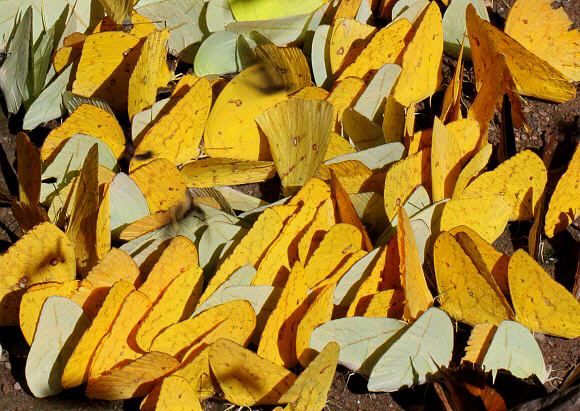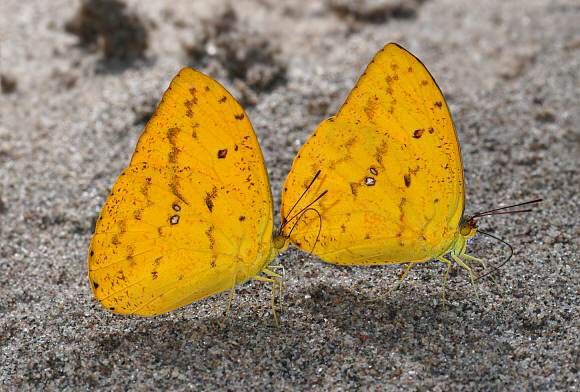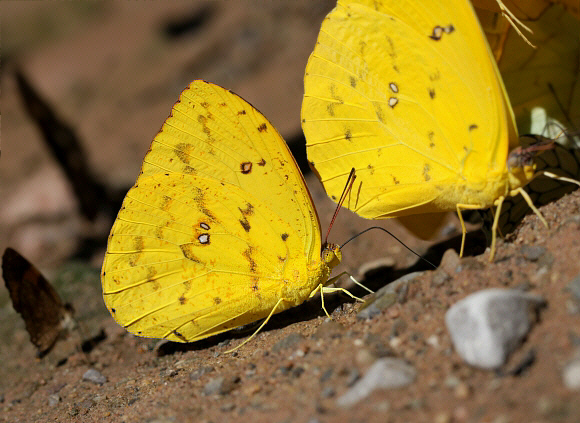
Introduction
The subfamily Coliadinae includes the Sulphurs, Grass Yellows, Clouded Yellows and Brimstones. In the neotropical region there are about 70 species.
The genus Phoebis comprises of 8 species, most of which are strongly migratory in behaviour. They are widely distributed across the region, with 3 exceptions : avellaneda which is endemic to Cuba, editha from Haiti, and the Ecuadorian species bourkei.
All Phoebis species are sexually dimorphic. Males are bright yellow above, with a thick patch of matt androconial scales around the forewing cell. Females are paler on both wing surfaces.
Phoebis argante is found from Mexico to Uruguay, and also occurs on most of the larger islands of the Caribbean, including Jamaica, Hispaniola and Cuba.


Habitats
This species can be found many different habitats including primary and secondary rainforest, open deciduous woodland, scrubby grassland, beach headlands, farmland and gardens; at altitudes from sea level to at least 1600m. In regions where seasonality is not pronounced it flies throughout the year. In areas such as Guanacaste where vegetation almost disappears in the dry season, there is a mass emergence shortly after the first rains.

Lifecycle
The egg is yellow and is laid singly on new leaves of Pentaclethra, Inga ( Mimosaceae ) and Cassia ( Caesalpinaceae ). The larva is dull yellowish-green, and during the early instars is covered in tiny dark green warts. It has a suffused green line along the back, and a yellowish line lateral line which is edged above with dark blue. When fully grown it is a dirty greenish colour with a whitish lateral stripe. The pupa is green, and is attached to a leaf or stem by the cremaster and a silken girdle.
Adult behaviour
Males often gather in huge numbers to imbibe mineralised moisture from river beaches in company with other Coliadinae including Phoebis neocypris, Phoebis sennae, Rhabdodryas trite and Aphrissa statira. These insects often form very tightly packed groups comprising of dozens of individuals. If alarmed the entire group erupts spontaneously, swirling in the air as a seething mass of fluttering yellow wings. When the danger has passed, they cautiously resettle one by one to resume feeding.
The paler females are seen less often, and are usually observed in flight, or when nectaring at red flowers such as Lantana and Impatiens. There is no courtship ritual – the females are intercepted in mid-flight and forced to the ground where copulation takes place immediately.
